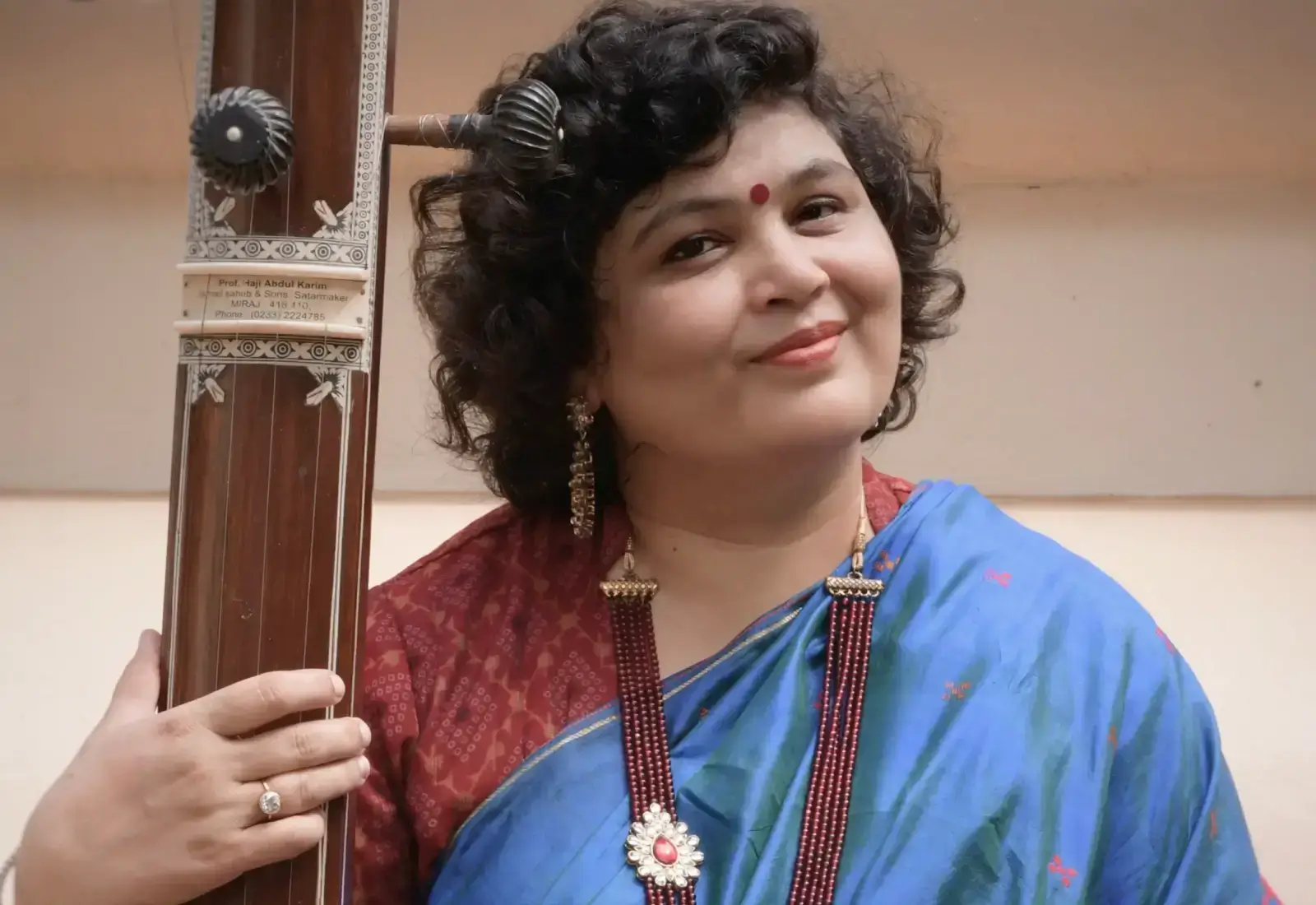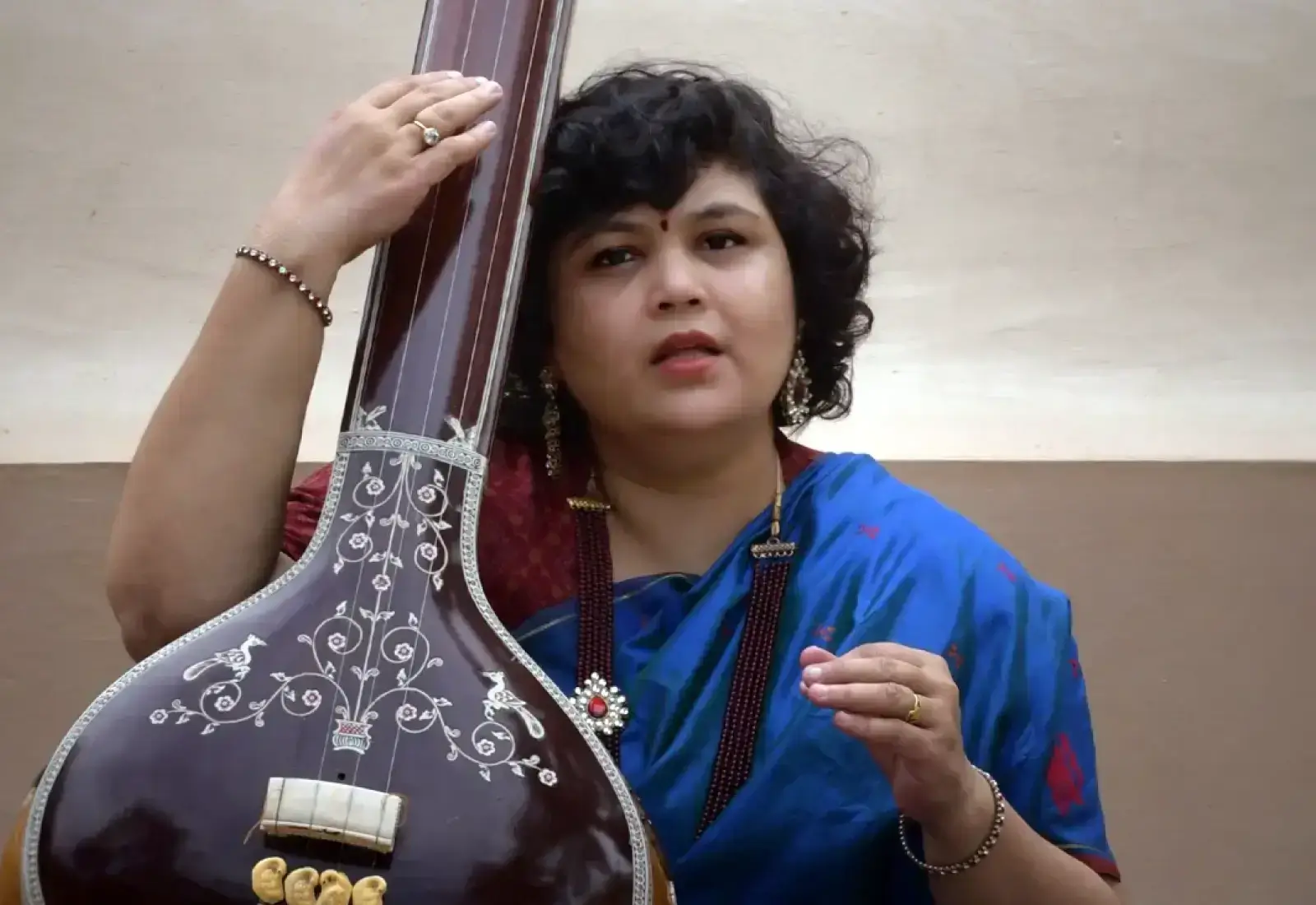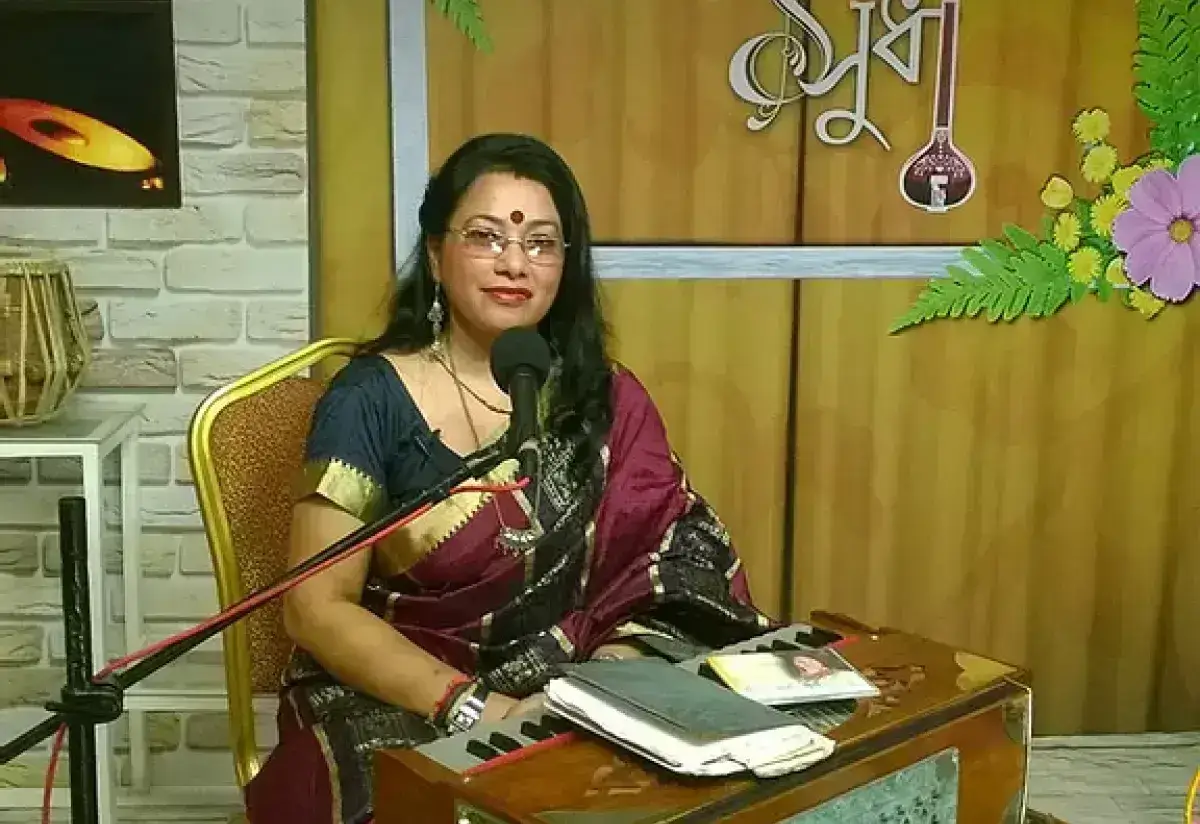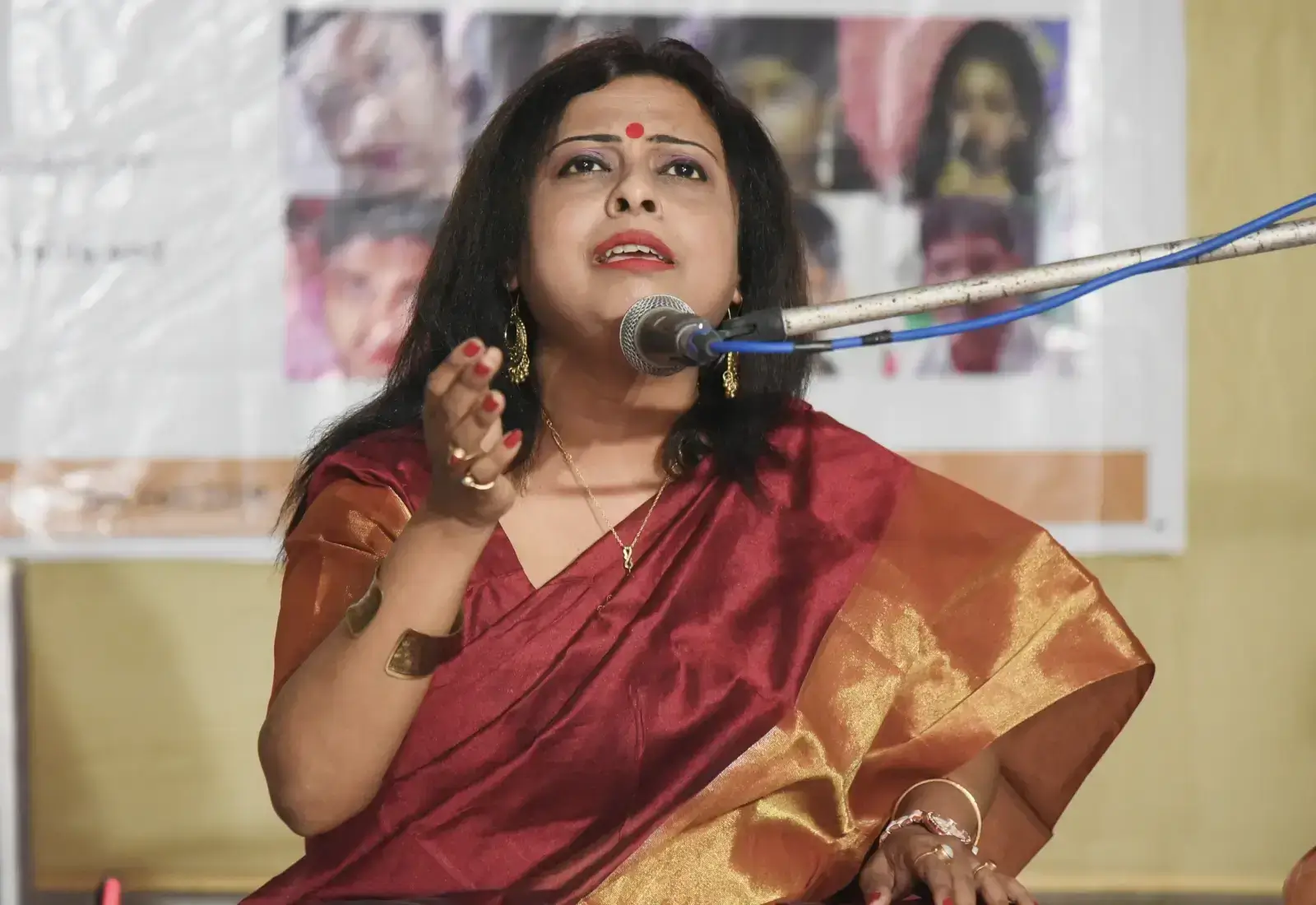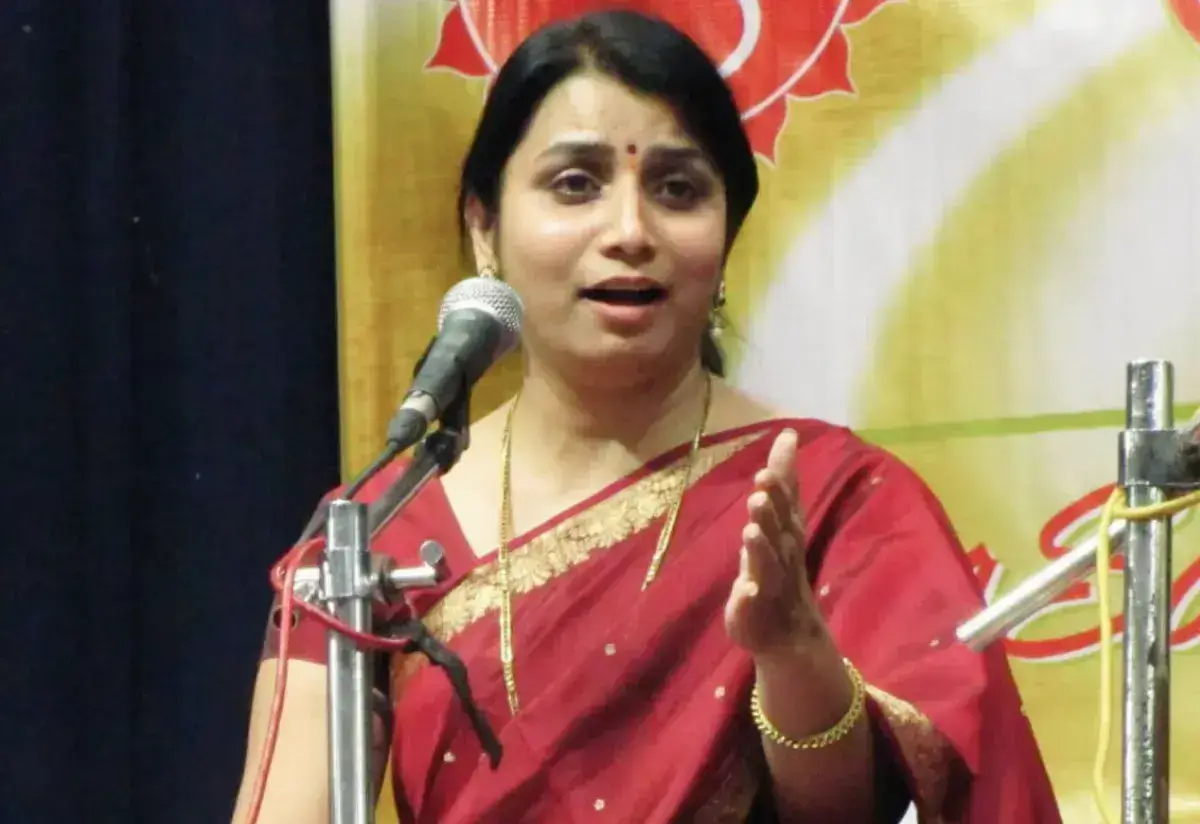Featured
How to Learn Hindustani Classical Music
The melody in her voice is soul-stirring. Her indigenous repertoire and impeccable command of music and rhythm are inviting and inspiring for new vocalists. And she is none other than one of the most senior Hindustani classical vocal music teachers at ipassio - Ashvini Modak.
Ashvini Ji, as we fondly call her - is a torchbearer of the Kirana Gharana, a winner of several accolades, and a celebrated performer at several prestigious stages.
By birth, she is enriched with a lineage of her grandfather - Late. PG Sukhatme, a celebrated Marathi stage artist, and her mother - Smt. Latika V Vyagrambare, an accomplished classical singer.
Having started under the tutelage of her mother, her musical journey was initially anchored ahead by Bimalendu Mukherjee of Imdadkhani Gharana.
Later she became the disciple of Padmavibhushan Dr. Prabha Atre of Kirana Gharana - an association that has been her guiding light for the past two decades.
Ashvini Ji’s association with ipassio for the last five years has been an incredibly rewarding journey. She has trained many students from across the world in Hindustani classical music. Now, her students stand as living testimonies of the possibilities and promises that online music classes bring along.
We are fortunate to have her speak on some of the most obvious questions that students have in their minds regarding Hindustani classical music and online music classes.
- How does a new student learn to identify a note? Can they identify notes on their own?
- It is believed that the intonation of the voice or ‘gale mein sur ka hona’ is God-gifted. Is it always true that only such people can sing? Or others who are keen to learn can also learn vocal music?
- What is Khayal?
- How do we elaborate a Raga?
- How soon a student can start improvising on their own?
- For how many years have you been teaching Hindustani classical music online?
- How did the online teaching take off?
- How did you get in touch with ipassio? Please tell us about your experience so far.
- What is your advice for new learners who are enrolling in online music classes?
Here presenting to you her valuable insights as shared with our writer Utpala Ghosh.
Utpala Ghosh (UG) - How does a new student learn to identify a note? Can they identify notes on their own?
Ashvini Modak (Ashvini Ji) - The musical notes or swaras as we call them in Hindustani classical music - have to be taught to a student in the same way the alphabet is taught for any new language.
A common mistake that I have noticed in some new learners is that they tend to sing one note in place of the other. For example - Re in place of Sa and Ga in place of Ma.
I make them understand the correct position of the note as opposed to where they are singing. At this point, it’s also hard for them to follow the scale or the tanpura.
So the best way for a beginner is to listen again and again. After repeated listening and practice, it will get fixed in their mind and they can master it.
UG - It is believed that the intonation of the voice or ‘gale mein sur ka hona’ is God-gifted. Is it always true that only such people can sing? Or others who are keen to learn can also learn vocal music?
Ashvini Ji - Voice quality and talent are God-gifted. However, it is not necessary that only such people can sing. The understanding of notes and intonation of voice can be achieved through proper guidance and regular practice.
It’s my own experience with my students. If you teach them in a specific way and if they are consistent in their classes and practice, then there is a remarkable improvement in their understanding of notes, tonal quality, and range of voice.
UG - What is Khayal?
Ashvini Ji - Khayal is a popular genre of Hindustani classical music. it is all about presenting the Raga following all its rules in a more aesthetic manner. It is a very spontaneous form of music that appeals to everyone.
Khayal can be sung in different layas - Vilambit (slow tempo), Madhya (faster than vilambit laya and slower than drut laya), and Drut laya (fast tempo).
UG - How do we elaborate a Raga?
Ashvini Ji - Hindustani classical music is based on shastra. There are several ragas. And while elaborating the Raga we need to follow the rules/ chalan/ swaroop of the raga.
The music materials include - composition, alaap, taan, sargam, bol taan, etc. A singer slowly opens the raga - starting with Prarambhik/ introductory alaap using the key phrases of the Raga.
They improvise the notes through all three octaves and add ornamentations like Kan-swaras, meend, gamak, khatka, etc. Depending on the time (gayan samay) given to the artists, they can select the Raga.
UG - How soon a student can start improvising on their own?
Ashvini Ji - The students should have their fundamentals clear, like - swar gyan (suddha, komal, and tevra swars), taal gyan (singing composition, simple taan, and alap in various taals maintaining the rhythm).
After that, the student can be upgraded to the advanced level where they can go into the depth of the Raga. They can start learning the different techniques of creating alaap on their own.
UG - For how many years have you been teaching Hindustani classical music online?
Ashvini Ji - I have been teaching music online for 8 to 9 years now. It started when one of my students relocated abroad. She used to miss our classes. One day she called me and requested if I could teach her online. So, I started teaching her through Skype and Whatsapp video calls. That is how my online music teaching journey started.
UG - How did the online teaching take off?
Ashvini Ji - A lot of my students requested online teaching. My students who had gone out of Pune and also my students who stayed in Pune but lived far from my house - started demanding online classes. They were very happy that they could continue their passion without worrying about the time-taking long-distance travel. Then during the Covid 19 pandemic, online teaching was the only option left for continuing the classes.
UG - How did you get in touch with ipassio? Please tell us about your experience so far.
Ashvini Ji - I joined ipassio 5-6 years back. Renowned sitar player - Subrata De who is also a senior teacher at ipassio introduced me to the team. It is an excellent platform. I can customize the curriculum as per each students learning objectives and capacities. The team is also very supportive.
UG - What is your advice for new learners who are enrolling in online music classes?
Ashvini Ji - Learning becomes easy when you come with an open mind. Just like it is easy to make designs on a white canvas. You should be ready to accept the Guru’s way of teaching. Learning is a gradual process. You need to have complete faith in your Guru.
Read more about the awards and accomplishments of Ashvini Ji and details of her courses at ipassio.com.
Also, explore the myriads of hobby learning opportunities offered by ipassio.



